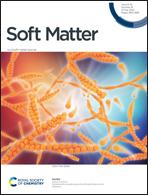Kagome lattice made by impenetrable ellipses with attractive walls
Abstract
Low-dimensional structures, such as the kagome lattice, are experiencing renewed interest within the physics, chemistry and materials science communities in terms of both basic and applied research. Herein, we show that stable kagome lattices can be made by hard-core ellipses with attractive walls. We study a model in which hard-core ellipse is covered uniformly by an attractive square-well layer. Analytical calculations predict that for certain combinations of the asphericity aspect ratio and the attraction range, the kagome lattice is the ground-state conformation of this model. For one specific set of parameters computer simulations prove that the kagome lattice is the lowest free energy structure at low temperatures. At high temperatures, the conformational ensemble is dominated by liquid states. The temperature at which transition from the liquid to the kagome structure occurs has a maximum as a function of density, indicating that the underlying phase transformation is re-entrant. The maximum is attributed to the energy difference between the liquid and crystalline states. Our study reveals that the kagome lattice can be produced by means of very simple models. No specifically designed molecular shapes or interactions are required. Instead, very basic physical characteristics, such as asphericity and uniform attraction, are sufficient to induce spontaneous transition into this structure. In the context of the general understanding of the self-assembly processes, this finding is encouraging, giving one hope that the requirements for the assembly of other low-dimensional structures could be equally simple.


 Please wait while we load your content...
Please wait while we load your content...